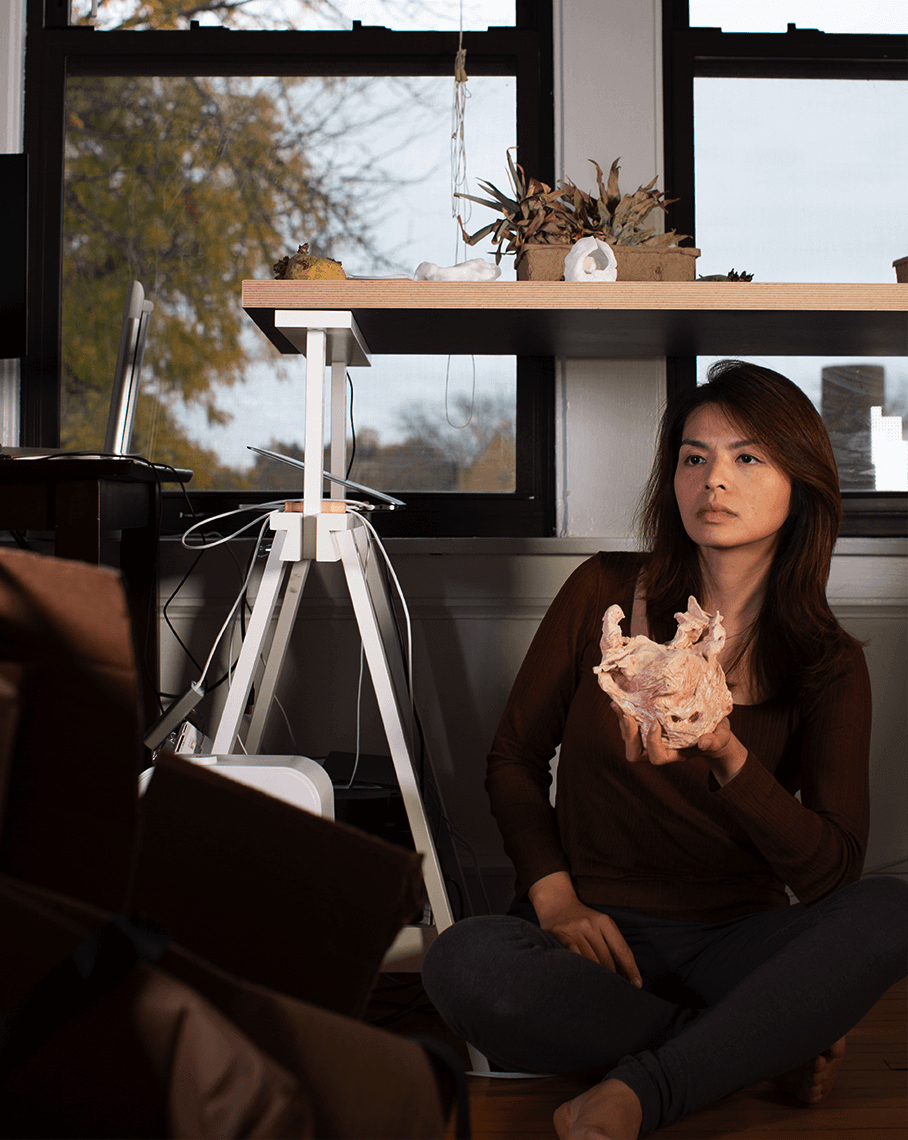Behind The Screen: Meet Doreen Chan
Introducing “Behind The Screen,” a look at the phenomenal artists participating in the Eyebeam xVH AWARD International Residency. A leap from our flagship residency, this program supports artists from the Asian diaspora who are developing projects that push the field of time-based media in exciting new directions.
Doreen Wing Yan Chan is an artist who lives and works in Chicago, IL, US. She was trained in visual communication and photography, and her practice investigates personal perception, materiality, and “daily details that are often overlooked.” Her VH Award proposal is Half Dream (2021). Conducted on a dedicated artificial intelligence platform, it is a participatory art project that connects participants via their subconscious and common dreams. Head to our site, linked in bio, to read more about Chan’s interest in dreams and the subconscious, the project of connecting people to their dream soulmates, and the use of artificial intelligence in her art practice.
What was your response to being shortlisted?
I was very excited as it was an approval by a jury of curators and directors from different important worldwide intuitions. Moreover, I just graduated from my master degree of art education in School of the Art Institute of Chicago. This is the best timing to continue developing my on-going participatory art project with the support from the VH Award and Eyebeam residency.
May we ask you to tell us how your training in visual communication and photography informs your art practice?
My training in visual communication and photography has developed the aesthetic style of my art practice. Images, the most widely used media among the public, have inspired me to transform and integrate them with other media as I reexamine how to create new audience experiences.
At the same time, my habit of taking photographs has been a process of developing my visual diary and sustaining my interest in personal memory. Most of the time, I photograph without reason and don’t care about the outcomes. They are raw materials for my art practice.
Would you tell us about your interests in dreams and the subconscious?
I believe dreams are a subconscious connection between people given the shared visual images in our waking lives. As a visual artist and artist educator in a time when people all over the world are facing similar but differing turbulent experiences, I look at dreams as a medium to connect people.
Differences separate us. Political polarization reinforced social cleavage both in Hong Kong where I am from and the U.S. in 2020. People with close relationships didn’t communicate anymore because of their different political views. During the COVID-19 pandemic, social distancing made connection among people even harder. The rise of mental disorders and overstimulated emotions shared by people globally has affected their dream patterns during the pandemic.
Because of these changes in emotions and mental disorders, I’m very interested in forming intimate connections between strangers using their dreams as the connective tissue and fiber.
Can you tell us about the comment you made that you “are not a data scientist, but I love the idea of helping people find their dream soulmates.” I want to create a project centered around common images and themes in dreams as shared phenomena, which could build bridges between people from different backgrounds. In this research, I collaborate with participants to examine the shared territories between dreams and realities.
To extend the cross-regional scale, I created an online platform titled HalfDream with a design team to collect dreams of people in different regions and match common dreams.
The goal isn’t about collecting dreams as data, but instead the intimate connections that this data can help construct.
May we ask you to tell us about your use of Artificial Intelligence in your art practice?
HalfDream is an intimate platform beyond systems of class, race and nationality—classifications that are often applied by society. After participants share dreams on HalfDream, artificial intelligence matches the common dreams, creating an artistic and intimate event with its participants. We only collect and display users’ dream content and preferred names. This lets participants focus on their dreams more deeply, particularly how the dream reflects their real lives. Apart from typing or voice recording their dream content, they are invited to draw something from their dreams, browse their cell phones and upload photos, sounds, or videos that are relevant to their dreams.
The form of the AI is still being finalized by myself and my team as we collect more data and dreams. We’re looking at analyzing the emotional content of the dreams based on the sentiment value of the dream content, along with some other factors.
May we ask you to tell us how you are using your online residency with Eyebeam, and how is it supporting your ability to realize your project?
I really treasure the time in the online residency with Eyebeam. It’s unfortunate that we couldn’t make it as in person residency with the peers due to the COVID-19 pandemic. After meeting two experts, the jury and Eyebeam team, I have kept developing my idea with the inspiration from the references they suggested to me and I have a clearer plan of execution. Meanwhile, the sharing of other finalists’ concepts and artworks build the connection between us. It’s important to have peer support.

